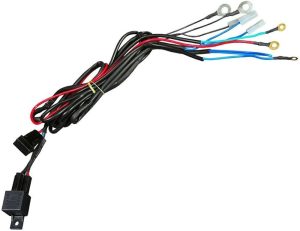Standard Procedure for Washer Pump Replacement in Service Centers
The washer pump replacement process begins with a thorough diagnosis by certified technicians. When a customer reports issues such as no fluid spray, weak spray, or unusual noises from the washer system, the technician first confirms that the washer pump is the root cause. This involves testing the system by activating the washer while listening for pump operation and checking for fluid flow. If no fluid is dispensed or the pump sounds faulty, the technician will inspect the electrical connections, fuses, and washer fluid reservoir for leaks or blockages. Only after confirming that the pump itself is defective do they proceed with replacement planning.
Preparing the Vehicle for Pump Removal
Once the decision to replace the washer pump is made, the service center technician prepares the vehicle. This step includes safely disconnecting the battery to prevent electrical shorts during the repair. Next, the technician locates the washer pump, typically mounted on or near the washer fluid reservoir inside the engine bay or under the vehicle. To ensure a clean and safe replacement, they drain any remaining washer fluid from the reservoir or cover the surrounding areas to avoid spills. They also gather all necessary tools and the correct replacement pump, which matches the vehicle’s make and model specifications. A smart choice of Auto Repair in Holland, MI would make all the changes.
Removing the Faulty Washer Pump
With preparations complete, the technician carefully removes the old washer pump. This involves disconnecting the electrical connector that powers the pump and detaching the fluid hoses connected to it. In some models, the pump is clipped or screwed into the reservoir, so technicians use appropriate tools to release it without damaging the reservoir or surrounding components. Any seals or grommets attached to the pump are inspected for wear or damage and replaced if necessary. This careful removal ensures the new pump will fit properly and prevent leaks once installed.
Installing and Connecting the New Washer Pump
The installation phase begins by placing the new washer pump into position, ensuring it seats securely on or inside the reservoir. Technicians reconnect the fluid hoses and electrical connectors, confirming tight and proper connections to avoid future failures. If new seals or grommets were required, they install those to maintain system integrity and prevent leaks. After installation, they refill the reservoir with fresh washer fluid, topping it off to manufacturer-recommended levels. This step is critical for proper pump function and to avoid air pockets that can hinder fluid flow.
Testing and Final Calibration
After the new pump is installed and the system refilled, technicians conduct a comprehensive test to verify correct operation. They activate the washer system multiple times, observing the spray pattern and checking for leaks around the pump and hose connections. The fluid spray should be strong, even, and aimed correctly at the windshield to ensure optimal cleaning performance. If necessary, they adjust the spray nozzles for proper alignment. Once testing confirms the system functions perfectly, the technician reconnects the battery, cleans up any spills, and completes documentation of the service. The vehicle is then ready to be returned to the customer with a fully operational washer system.




